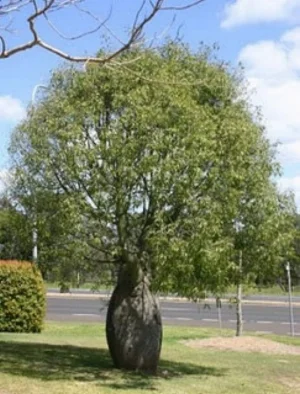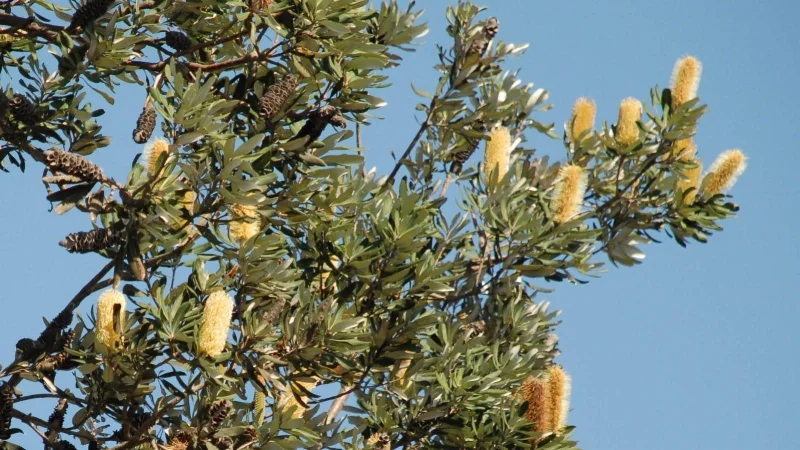5 (more) of the best trees for Brisbane gardens
A while ago I discussed the 5 best trees for Brisbane. It was by no means an exhaustive list, so here I'm going to add 5 more. Planting trees in your Brisbane garden can increase the value of your lifestyle and home but remember, there are issues to consider such as: our sub-tropical climate; branch drop; leaf litter; maintenance requirements; shade and size. Here are another 5 great trees that I recommend for gardens in Brisbane and surrounds:
1. PLUMERIA rubra (Frangipani)
The quintessential Brisbane staple. Bearing lush green leaves and beautiful flowers of varying shades of yellow or pink, the fragrance of the Frangipani is devine. Or at least we at Seed think it is. The perfume that wafts through the studio door puts us on a Frangipani high and in a fabulous mood. In Brisbane the Frangipani is a deciduous tree providing shade during the warmer months and letting the sun through during the cooler months. This is in contrast to the evergreen nature of the tree in areas closer to the equator. When the leaves do drop, the Frangipani is very considerate when it comes to quick garden maintenance as it 'mass drops' its leaves. The broad structure of the leaves means clean-up is a breeze, even if a few of them land in the pool. Speaking of which, this beautiful tree has a non-invasive root system, so is suitable for placement near your pool. The Frangipani continues to provide a spectacular, visual display, even without its leaves and flowers, as its sculptural branches reach up into the sky. Be warned though! The Frangipani is a very, slow grower. The best time to plant? About 5 years ago.
2. BRACHYCHITON rupestris (Bottle Tree)
The BRACHYCHITON rupestris - also known as a Bottle Tree - is hands down, no questions asked, without question my favourite. The Bottle Tree has a strong rural aesthetic and holds a great affinity with rural and remote Australia. This makes it perfect for native gardens. It is extremely drought tolerant once established. That bulge in the Bottle Tree's trunk isn't there to simply make it look good. That is where the tree stores its water, to see it through the dry patches. With such a distinctive profile, the Bottle Tree is best used sparingly to ensure it remains a focal point in the garden. Remember to plant in full sun as it doesn't like damp conditions.
3. BANKSIA integrifolia (Coast Banksia)
Like the Bottle Tree the Coast Banksia is an Australian native garden tree. As the name suggests, it handles the coastal winds and sea spray of the East Australian coast line but is also found amongst mountains ranges. It is hardy and grows fast, so this ornamental specimen will take pride of place in your garden in no time at all. Once it does, the Coast Banksia will attract native birds and insects to its candle-like flowers. The green and silver combination of the leaves creates a stunning effect in the wind, and work beautifully with well designed outdoor lighting. The white/silver under leaf takes the up lighting and reflects a soft, diffused light in the garden.
4. HIBISCUS tiliaceus 'Rubra' (Bronze Cottonwood)
Not your Grandma's Hibiscus!!! The Bronze Cottonwood enjoys coastal conditions and sandy soils just like the Coast Banksia. It has a non-invasive root system and is drought tolerant. The dark maroon, new growth foliage really sets the Bronze Cottonwood apart in the garden, as it contrasts against the lush greens of surrounding vegetation, accented with beautiful yellow flowers. Growing to medium height between 6m - 8m (approx) the Bronze Cottonwood can create a screen or be enjoyed as a stand alone feature tree.
5. GREVILLEA baileyana (White Oak)
As the Bronze Cottonwood bares little resemblance to Grandma's Hibiscus, the GREVILLEA baileyana bares little resemblance to the typical Grevillea. This beauty is tall and thin, reaching up to approximately 10m in a domestic garden situation. The large, gloss green leaves with bronze underside are a similar to that of the Magnolia. Late Spring sees the tree covered in creamy coloured flowers not only adding to the elegant colour palette of the foliage, but attracting birds and insects to the garden with a strong nectar perfume. The White Oak is large and has invasive roots. Please seek professional advice prior to planting to ensure an appropriate planting space is selected.
As mentioned in the 5 best trees for Brisbane, I haven’t been able to include every tree that works well in a Brisbane garden, but these are another great 5 to add to the list. I will add more over time so watch this space. For more information on coastal trees and plantings, you might like to check out some ideas I have for you here at Modern Coastal Plant Combination for S.E. QLD
Note: All trees and plants have varying root systems. Please ensure you seek professional advice prior to planting, to prevent serious damage caused when planting the wrong tree/plant in the wrong place. Examples can include infrastructure and services damage, as well as potential harm to family, friends and/or the general public. Contact SEED Landscape Design to book a consultation and together we can make sure you get it right the first time.
If you liked this article, you might also be interested in my pieces The Four Worst Trees to Plant in your Brisbane Garden and 5 Great Plants for Part-Shade Brisbane Gardens. Of course, please feel free to contact us at SEED Landscape Design at any time to talk about your garden requirements.
Images: 1. Sarangib 2. CARE Transplanters 3. Kew Science 4. Seed Landscape Design 5. M. Fagg






